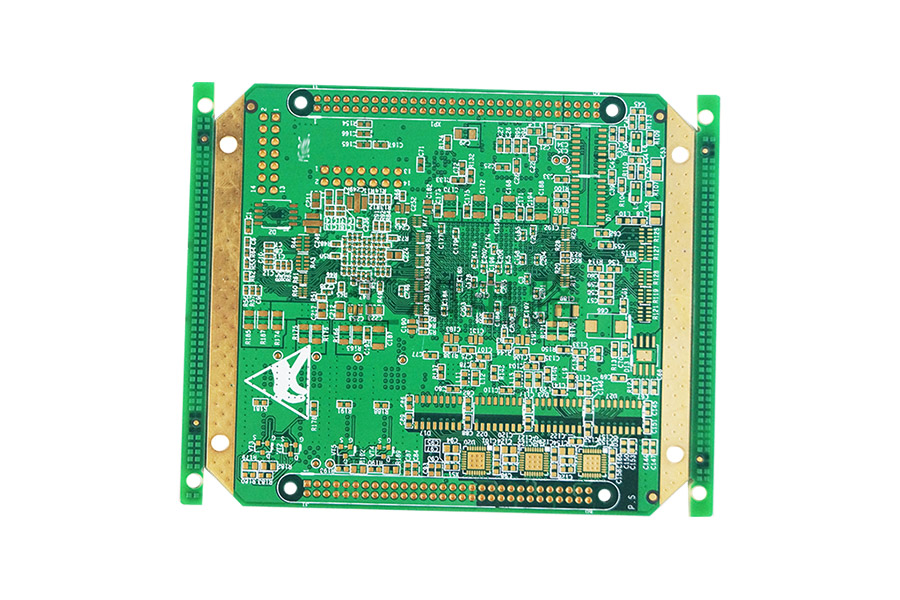The Main Materials For PCB Manufacturing
Nowadays, there are many PCB manufacturers, the price is not high or low, quality and other problems we know nothing about, how to choose PCB manufacturing materials? Processing materials, generally copper clad plate, dry film, ink, etc., the following several materials for a brief introduction.
1. Copper clad
Called double-sided copper clad plate. Whether the copper foil can be firmly covered on the substrate is determined by the binder, and the stripping strength of the copper clad plate mainly depends on the performance of the binder. Commonly used copper clad plate thickness of 1.0 mm, 1.5 mm and 2.0 mm three.
(1) types of copper clad plates.
There are many classification methods for copper clad plates. Generally according to the plate reinforcement material is different, can be divided into: paper base, glass fiber cloth base, composite base (CEM series), multi-layer plate base and special material base (ceramic, metal core base, etc.) five categories. According to the different resin adhesives used by the board, the common paper based CCL are: phenolic resin (XPC, XXXPC, FR-L, FR-2, etc.), epoxy resin (FE-3), polyester resin and other types. Common glass fiber base CCL has epoxy resin (FR-4, FR-5), it is currently the most widely used type of glass fiber base. Other speciality resin (with glass fiber cloth, nylon, non-woven, etc to increase the material) : two maleic imide modified triazine resin (BT), polyimide (PI) resin, diphenylene ideal resin (PPO), maleic acid obligation imine – styrene resin (MS), poly (oxygen acid ester resin, polyene embedded in resin, etc. According to the flame retardant properties of CCL, it can be divided into flame retardant and non-flame retardant plates. In recent one to two years, with more attention to environmental protection, a new type of CCL without desert materials was developed in the flame retardant CCL, which can be called “green flame retardant CCL”. With the rapid development of electronic product technology, CCL has higher performance requirements. Therefore, from the performance classification of CCL, it can be divided into general performance CCL, low dielectric constant CCL, high heat resistance CCL, low thermal expansion coefficient CCL (generally used for packaging substrate) and other types.
(2) performance indicators of copper clad plate.
Glass transition temperature. When the temperature rises to a certain region, the substrate will change from “glass state” to “rubber state”, this temperature is called the glass transition temperature (TG) of the plate. That is, TG is the highest temperature (%) at which the substrate remains rigid. That is to say, ordinary substrate materials at high temperature, not only produce softening, deformation, melting and other phenomena, but also show a sharp decline in mechanical and electrical characteristics.
Generally, the TG of PCB boards is above 130℃, the TG of high boards is above 170℃, and the TG of medium boards is above 150℃. Usually a TG value of 170 printed board, called a high TG printed board. The TG of substrate is improved, and the heat resistance, moisture resistance, chemical resistance, stability and other characteristics of printed board will be improved and improved. The higher the TG value, the better the temperature resistance of the plate, especially in the lead-free process, high TG PCB is more widely used.
2. Dielectric constant.
With the rapid development of electronic technology, the speed of information processing and information transmission is improved. In order to expand the communication channel, the use frequency is transferred to the high frequency field, which requires the substrate material to have a low dielectric constant E and low dielectric loss TG. Only by reducing E can high signal transmission speed be obtained, and only by reducing TG can signal transmission loss be reduced.
3. Thermal expansion coefficient.
With the development of precision and multilayer of printed board and BGA, CSP and other technologies, PCB factories have put forward higher requirements for the stability of copper clad plate size. Although the dimensional stability of the copper clad plate is related to the production process, it mainly depends on the three raw materials of the copper clad plate: resin, reinforcement material and copper foil. The usual method is to modify the resin, such as modified epoxy resin; Reduce the resin content ratio, but this will reduce the electrical insulation and chemical properties of the substrate; Copper foil has little influence on the dimensional stability of copper clad plate.
4. UV blocking performance.
In the process of circuit board manufacture, with the popularization of photosensitive solder, in order to avoid the double shadow caused by mutual influence on both sides, all substrates must have the function of shielding UV. There are many ways to BLOCK the transmission of ULTRAVIOLET light. Generally, one or two kinds of glass fiber cloth and epoxy resin can be modified, such as using epoxy resin with UV-block and automatic optical detection function.
Huihe Circuits is a professional PCB factory, every process is rigorously tested. From the circuit board to make the first process to the last process quality inspection, layer upon layer need to be strictly checked. The choice of boards, the ink used, the equipment used, and the rigor of the staff can all affect the final quality of the board. From the beginning to the quality inspection, we have professional supervision to ensure that every process is completed normally. Join us!
Post time: Jul-20-2022





